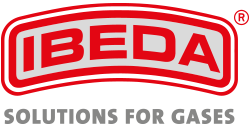Gas tightness of safety devices

Leak rate – Definition
Tightness or leak rate is a unit of measure of the amount of substance that flows into the device during a specified period of time. Compressed gases are defined by the product of pressure and volume at a given temperature. Therefore, the leak rate "Q=" is most often specified as "mbar x L/s". However, in principle, all flow rates and mass flow units may be applied.
Definition:
A volume of 1 L contains exactly 1,000 cm³ of gas at a pressure of 1 bar. For example, if gas leaks precisely 1 cm³ per second, the pressure drops 1 mbar per second. Consequently, the leak rate is 1 mbar x L/s.
Therefore, the leak rate is usually identified with the formula symbol Q or QL. The following units of measure are typically used for the leak rate:

A leak rate of 1 Pa·m3/s is given if the pressure in a closed, evacuated container with a volume of 1 m³ rises by 1 Pascal in one second.
External and internal gas tightness compliant with EN ISO 5175-1
External gas tightness
The external gas tightness must comply with EN 29090. The permissibility rate is 8 cm³/h or 0.002222 mbar x L/s. In order to test the safety devices, the maximum permissible operating pressure must be applied.
Internal gas tightness (gas non-return test)
If the diameter of a connecting fitting is 10 mm (or 0.41 d² for larger diameters), the internal gas tightness must not exceed a leak rate of 50 cm³/h or 0.013888 mbar x L/s. The pressure for the gas non-return test is 0-30 mbar.
